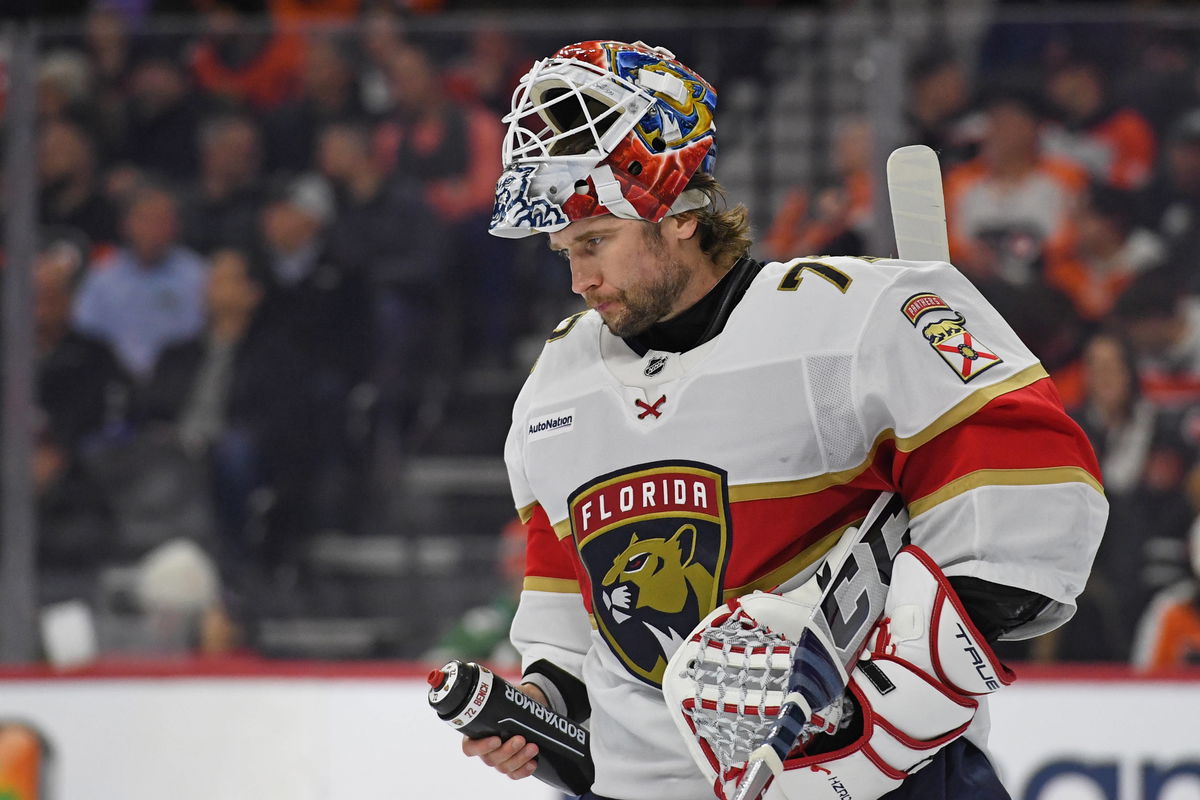
Imago
NHL, Eishockey Herren, USA Florida Panthers at Philadelphia Flyers Jan 13, 2025 Philadelphia, Pennsylvania, USA Florida Panthers goaltender Sergei Bobrovsky 72 during a break against the Philadelphia Flyers during the first period at Wells Fargo Center. Philadelphia Wells Fargo Center Pennsylvania USA, EDITORIAL USE ONLY PUBLICATIONxINxGERxSUIxAUTxONLY Copyright: xEricxHartlinex 20250113_eh_se7_00939

Imago
NHL, Eishockey Herren, USA Florida Panthers at Philadelphia Flyers Jan 13, 2025 Philadelphia, Pennsylvania, USA Florida Panthers goaltender Sergei Bobrovsky 72 during a break against the Philadelphia Flyers during the first period at Wells Fargo Center. Philadelphia Wells Fargo Center Pennsylvania USA, EDITORIAL USE ONLY PUBLICATIONxINxGERxSUIxAUTxONLY Copyright: xEricxHartlinex 20250113_eh_se7_00939
The NHL’s long history of labor tension feels almost like a relic of another era. Between 1992 and 2012, four work stoppages fractured the sport’s rhythm. That also includes the cancellation of the entire 2004–05 season. However, that kind of turbulence is now a distant memory. In June, the league and the players’ union agreed on a new four-year deal, more than a year before the current collective bargaining agreement expires in 2026. This early accord is a sign that both parties are working well together. And this reflected in the league’s financial surge.
Watch What’s Trending Now!
But money and performance are not always in alignment. This imbalance was evident in the latest franchise valuations. For instance, the New York Rangers are valued at $3.65 billion, while the newly crowned Stanley Cup champions, the Florida Panthers, sit near $1.89 billion. That is almost $2 billion less. The contrast is indeed striking. One team swimming in market power but still chasing a championship drought of more than 30 years. While the other has just lifted the Stanley Cup, yet operates on barely a third of that financial scale.
The broader valuation picture further narrates a tale of rapid escalation. According to Sportico’s 2025 franchise report, “The average NHL franchise is worth $2.1 billion, up 17% from 2024 by Sportico’s calculations, based on conversations with bankers, investors, lawyers, team executives and owners.” The report further adds, “the three-year change for the NBA is 78%, followed by the NFL at 72% and MLB lagging at 22%.”
ADVERTISEMENT
The 2025 NHL franchise valuations are in 💰👀
(via @sportico) pic.twitter.com/MiXgyJt0KK
— Sportsnet (@Sportsnet) October 2, 2025
At the top of the chart, the Toronto Maple Leafs continue to dominate with a $4.25 billion valuation. Their fifth consecutive year leading the league, despite their own 58-year Stanley Cup drought. The Rangers follow at $3.65 billion, ahead of the Montreal Canadiens ($3.3 billion), Boston Bruins ($3 billion), and Los Angeles Kings ($2.96 billion). Meanwhile, the Panthers’ worth, hovering around $1.4 billion, places them near the lower half of the financial spectrum. The “get-in” price for owning an NHL team now stands at $1.3 billion. And it just reveals how quickly the floor has risen.
For the Panthers, their 2024 Stanley Cup win should have been the pinnacle of sporting reward. Yet in the balance sheets, the glory remains a modest multiplier. However, it’s a different story for the Rangers, as their enduring brand power, location, and legacy continue to result well. Amid this, Rogers’ move toward full ownership of MLSE unfolded. And southern franchises like Dallas and Tampa have been redefining the league’s growth story.
ADVERTISEMENT
Is Rogers’ MLSE takeover the mirror image of the NHL’s southern rise?
Rogers Communications had strengthened its position at Maple Leaf Sports & Entertainment, taking control of 75% of the organization and preparing to complete full ownership by 2026. The remaining 25%, held by Larry Tanenbaum’s Kilmer Sports Ventures, was expected to change hands through a process already defined by a panel of professional evaluators.
ADVERTISEMENT
Edward Rogers described the arrangement as “well defined,” adding that the company anticipated “a smooth and productive process.” Such a transition placed Rogers at the center of one of North America’s most valuable sports entities. More so because it would be impacting Toronto’s broader entertainment economy.
At the same time, the league’s balance of power had shifted southward. The Sun Belt, a region which once seemed fragile for hockey had recently turned into a proving ground for success. In the past six years, Dallas, Las Vegas, Miami, and Tampa accounted for two-thirds of the Stanley Cup Final appearances, securing five championships among them.
Following this rise, in Tampa, Jeff Vinik’s investment in the Lightning solidified the matter even more. Purchased for just over $100 million in 2010 it was later sold at sixteen times that value. And with this, the franchise entered the new season with a 417-game sellout streak.
ADVERTISEMENT
ADVERTISEMENT
ADVERTISEMENT
ADVERTISEMENT

